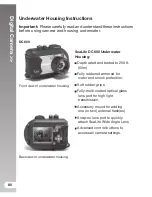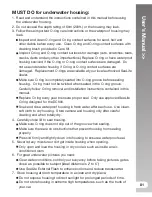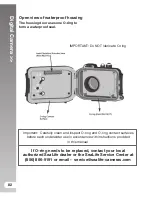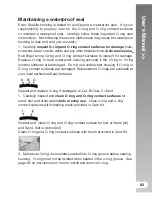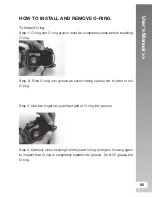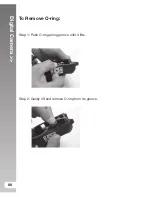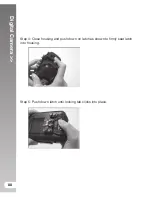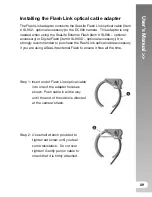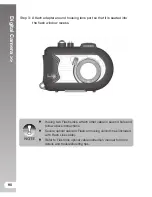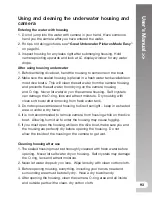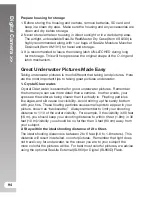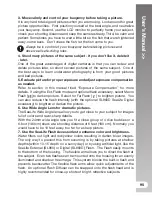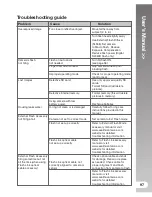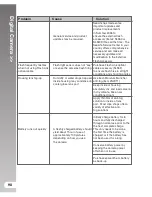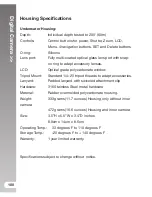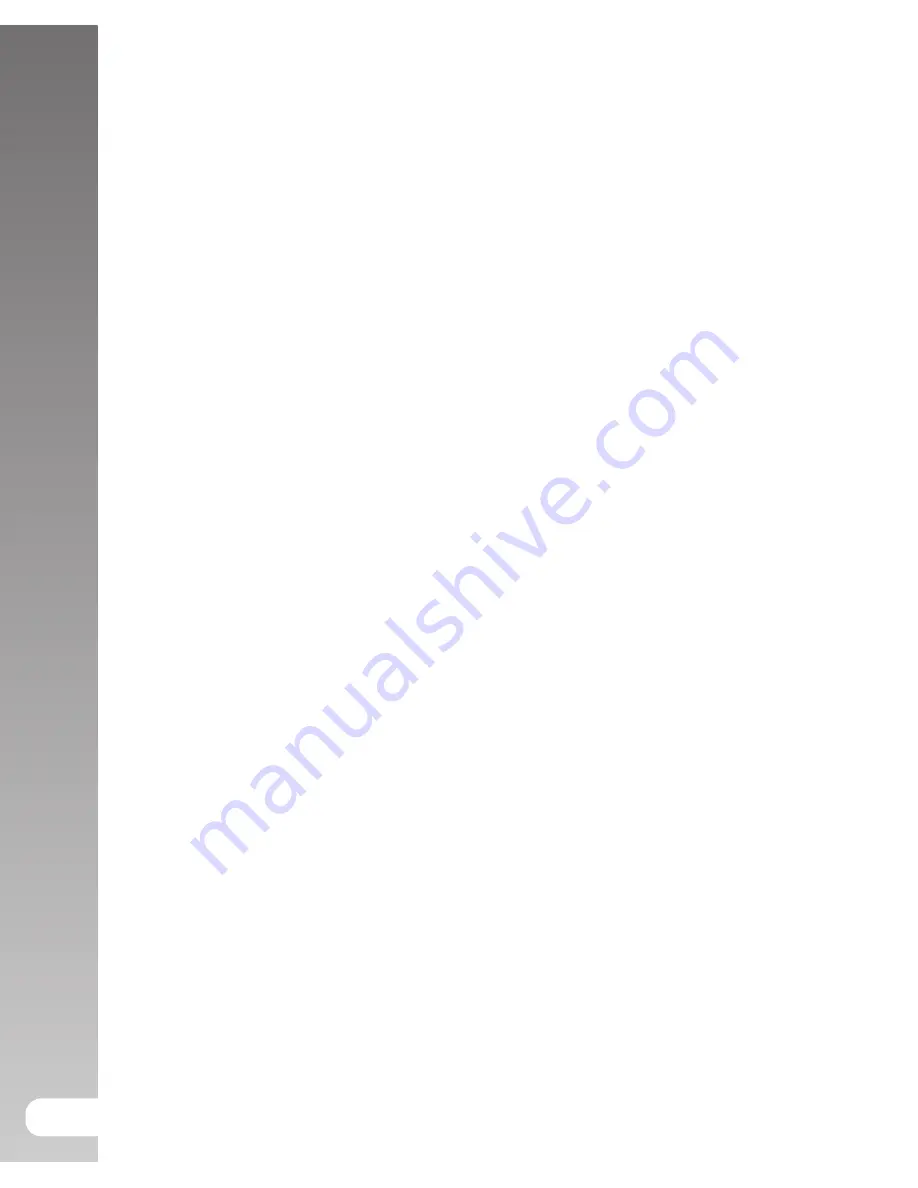
Digital Camera >>
94
Prepare housing for storage
1. Before storing the housing and camera, remove batteries, SD card and
keep in a clean dry area. Make sure the housing and any accessories are
clean and dry before storage.
2. Never store camera or housing in direct sunlight or in a dark damp area.
The airtight, unbreakable SeaLife ReefMaster Dry Case (Item # SL930) is
highly recommended along with 1-oz bags of SeaLife Moisture Muncher
Desiccant (Item # M101) for travel and storage.
3. It is recommended to leave the closing latch UNLATCHED during long
term storage. This will help preserve the original shape of the O-ring and
latch mechanism.
Great Underwater Pictures Made Easy
Taking underwater pictures is much different that taking land pictures. Here
are the most important tips to taking great pictures underwater:
1. Crystal Clear water.
Crystal Clear water is essential for good underwater pictures. Remember
the human eye can see more detail than a camera. In other words, your
eyes see the water as being clearer than it actually is. Floating particles
like algae, and silt cause low visibility. Avoid stirring up the sandy bottom
with your fins. These floating particles cause small spots to appear in your
picture, known as “backscatter.” Always remember to limit your shooting
distance to 1/10 of the water visibility. For example, if the visibility is 60 feet
(18 m), you should keep your shooting distance to within 6 feet (1.8m); in 30
feet (10 m) visibility you should be no further than 3 feet (90 cm) away from
your subject.
2. Stay within the ideal shooting distance of 2 to 6 feet.
The ideal shooting distance is between 2 to 6 feet (0.6 to 1.8 meters). This
distance will result in detailed, colorful pictures. Remember that light does
not travel very far underwater, so the closer you are to your subject the
more colorful the pictures will be. For best most colorful pictures, we advise
using the optional SeaLife External (SL960) or Digital (SL960D) Flash.

